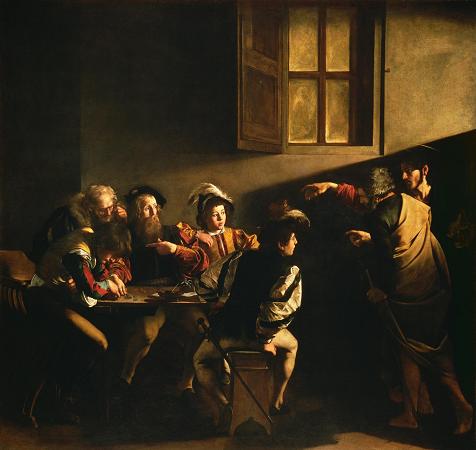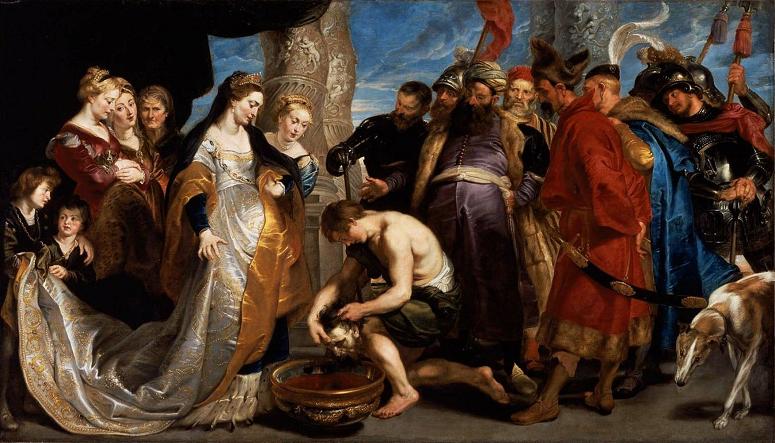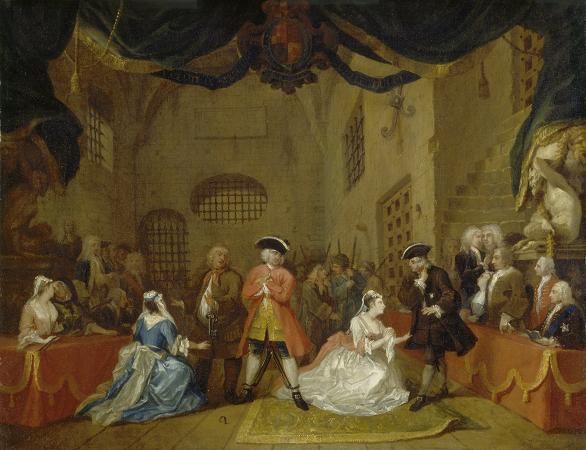Canvas. Canvas is a woven fabric traditionally made from hemp or flax. It revolutionized painting by offering a lightweight, flexible, and inexpensive alternative to wooden panels. A well-known canvas painting from the 16th century is the Rape of Europa by Titian (1561, Gardner Museum, Boston). In the 17th century, Peter Rubens painted the Cimon and Pero (c1630, Rijksmuseum) and Jan Vermeer created Girl with Pearl Earring (c1666, Mauritshaus). Notable oil paintings from the 18th century include Antoine Watteau's Mezzetin (c1719, Metropolitan Museum), Time Unveiling Truth by Giovanni Battista Tiepolo (c1748, Museum of Fine Arts, Boston) and Cliffs of Colorado River by Thomas Moran (1882, Smithsonian American Art Museum). Paintings on canvas in the 19th century included Theodore Gericault's Raft of Medusa (1819, Louvre) and Gustave Courbet's Artist's Studio (1855, Musee d'Orsay). The 20th century saw the creation of Picasso's Women of Avignon (1907) and Andrew Wyeth's Christina's World (1948), both of which can be seen at the Museum of Modern Art in New York City. Despite its susceptibility to tears or punctures, as seen in restorations of the Birth of Venus (c1482, Uffizi), canvas remains a major artistic surface due to its versatility and affordability. It differs from other heavy cotton fabrics, such as denim, in being plain weave rather than twill weave. Canvas comes in two basic types: plain and duck. The threads in duck canvas are more tightly woven. The term duck comes from the Dutch word for cloth, doek. In the United States, canvas is classified in two ways: by weight and by a graded number system. The numbers run in reverse of the weight so a number 10 canvas is lighter than number 4. Canvas has become the most common support medium for oil painting, replacing wooden panels. It was used from the 14th century in Italy, but only rarely. One of the earliest surviving oils on canvas is a French Madonna with angels from around 1410 in the Gemaldegalerie, Berlin. The word canvas is derived from the 13th century Anglo-French canevaz and the Old French canevas. Both may be derivatives of the Vulgar Latin cannapaceus for made of hemp, originating from the Greek. Canvas has become the most common support medium for oil painting, replacing wooden panels. It was used from the 14th century in Italy, but only rarely. One of the earliest surviving oils on canvas is a French Madonna with angels from around 1410 in the Gemeldegalerie, Berlin. Its use in Saint George and the Dragon by Paolo Uccello in about 1470, and Sandro Botticelli's Birth of Venus in the 1480s was still unusual for the period. Large paintings for country houses were apparently more likely to be on canvas, and are perhaps less likely to have survived. It was a good deal cheaper than a panel painting, and may sometime indicate a painting regarded as less important. In the Uccello, the armour does not use silver leaf, as other of his paintings do. Another common category of paintings on lighter cloth such as linen was in distemper or glue, often used for banners to be carried in procession. This is a less durable medium, and surviving examples such as Dirk Bouts' Entombment, in distemper on linen are rare, and often rather faded in appearance. Panel painting remained more common until the 16th century in Italy and the 17th century in Northern Europe. Mantegna and Venetian artists were among those leading the change; Venetian sail canvas was readily available and regarded as the best quality.
more...














